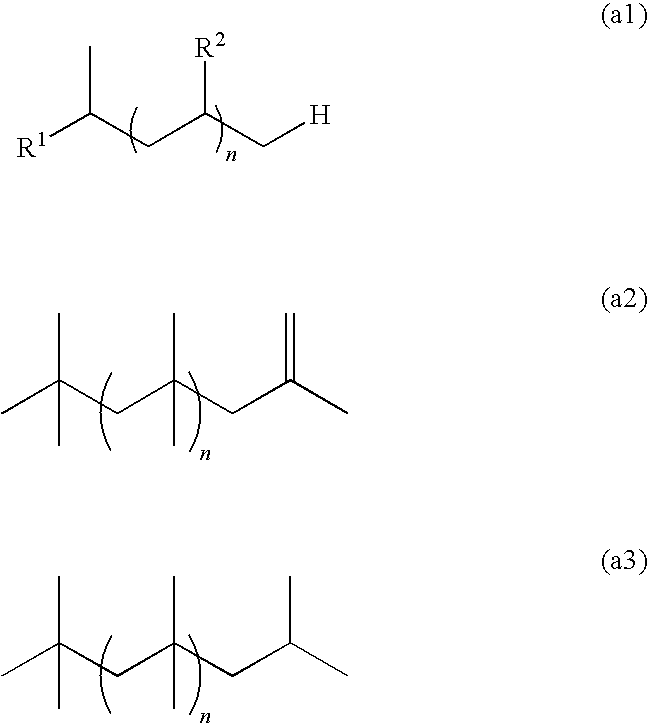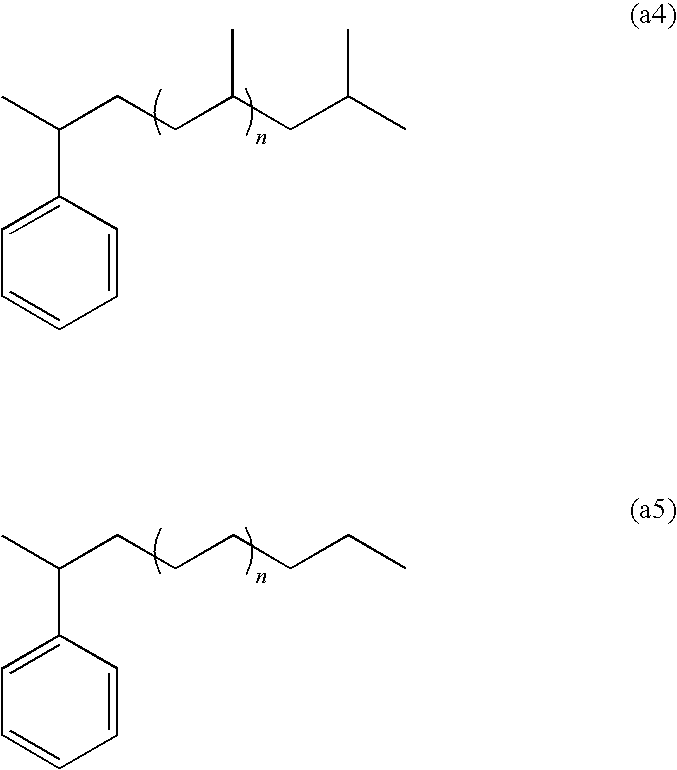Composition for imprints, pattern and patterning method
a technology of composition and imprint, applied in the field of composition for imprints, can solve the problems of so-called magnetic field expansion, cost reduction and throughput increase, and difficult to satisfy all the three of micropattern resolution, and achieve the effects of enhancing mold resistance releasability, enhancing composition flowability, and hardly worsening mold transferability
- Summary
- Abstract
- Description
- Claims
- Application Information
AI Technical Summary
Benefits of technology
Problems solved by technology
Method used
Image
Examples
first embodiment
of the Invention
[0039]A first embodiment in the composition for imprints of the invention (which may be hereinafter referred to as the “composition of the invention”) is a curable composition for photoimprints, which comprises a polymerizable monomer (A), a photopolymerization initiator (B), and a lubricant (C) (which may be hereinafter referred to as “composition for photoimprints” of the invention). Generally, the curable composition used in the photoimprint method has been constituted by comprising a polymerizable monomer having a polymerizable functional group, and a photopolymerization initiator that initiates the polymerization reaction of the polymerizable monomer through photoirradiation, and also optionally comprising a solvent, a surfactant, an antioxidant, or the like. In the invention, it further comprises a lubricant (C).
Polymerizable Monomer (A)
[0040]The polymerizable monomers which can be preferably used in the invention include, for example, a polymerizable unsaturat...
second embodiment
of the Invention
[0114]A second embodiment in the composition for imprints of the invention is a composition for thermal imprints, which comprises a resin component (D) and a lubricant (C) (which may be hereinafter referred to as the “composition for thermal imprints” of the invention). Generally, the composition used in the thermal imprint method is constituted by comprising a resin component, and also optionally comprising a solvent, a surfactant, an antioxidant, or the like. In the invention, it further comprises a lubricant (C).
Resin Component (D)
[0115]As the resin component, any resin capable of transferring a pattern can be used, but it is preferably a resin having a repeating unit selected from a (meth)acrylate repeating unit, a styrene repeating unit, and a polyolefin repeating unit. Preferable repeating units derive from for example methyl(meth)acrylate, benzyl(meth)acrylate, naphthyl(meth)acrylate, naphthyl methyl(meth)acrylate, 1-adamantyl(meth)acrylate, styrene, norbornen...
examples
[0144]The characteristics of the invention are described more concretely with reference to Production Examples and Examples given below. In the following Examples, the material used, its amount and the ratio, the details of the treatment and the treatment process may be suitably modified or changed not overstepping the scope of the invention. Accordingly, the invention should not be limitatively interpreted by the Examples mentioned below.
PUM
| Property | Measurement | Unit |
|---|---|---|
| size | aaaaa | aaaaa |
| size | aaaaa | aaaaa |
| roughness | aaaaa | aaaaa |
Abstract
Description
Claims
Application Information
 Login to View More
Login to View More - R&D
- Intellectual Property
- Life Sciences
- Materials
- Tech Scout
- Unparalleled Data Quality
- Higher Quality Content
- 60% Fewer Hallucinations
Browse by: Latest US Patents, China's latest patents, Technical Efficacy Thesaurus, Application Domain, Technology Topic, Popular Technical Reports.
© 2025 PatSnap. All rights reserved.Legal|Privacy policy|Modern Slavery Act Transparency Statement|Sitemap|About US| Contact US: help@patsnap.com



